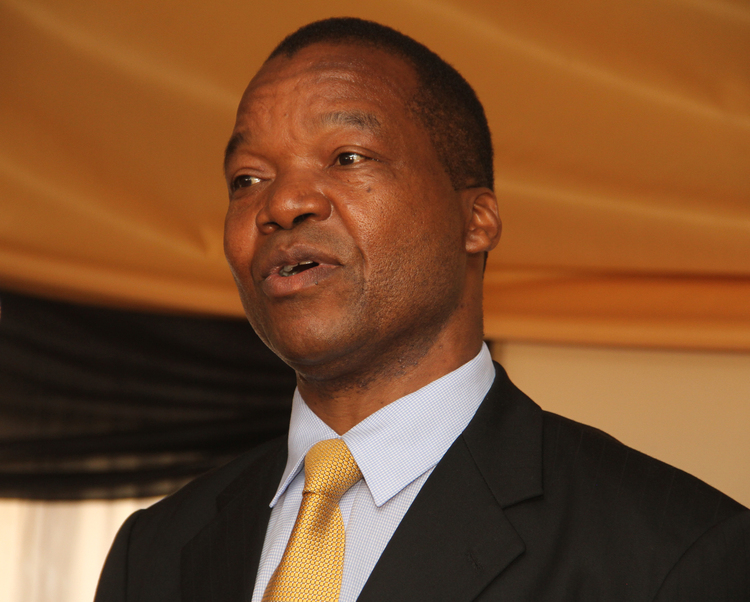
The Sunday Mail

THERE is definitely something strange about the diamond industry. It is almost eeriengly similar to an enchanted forest for it almost always attracts vile characters, corporate sleaze and a host of other evil practices.
The amount of grief that has struck some African countries such as Sierra Leone because of their precious stones is unquestionable.
Equally, closer to home, gory tales of the diamond rush that began in the summer of 2006 have been told. It is said some panners could do anything – even killing fellow panners – to lay their hands on a diamond.
The Chiadzwa diamond fields almost turned into an African version of the Wild Wild West where the law of the jungle – mostly underpinned by greed – was the law.
It was a relief when Government financially took over in December 2006.
For a country that had been under sanctions for seven years then, there was hype, understandly so, of the potential impact that diamonds could have on the local economy.
Outlandish claims added to optimism that diamonds could help prop the economy and set it on a path of sustainable economic growth.
But in 2007, former Reserve Bank of Zimbabwe Governor, Dr Gideon Gono told a parliamentary committee on mines that the country was losing an estimated $1,2 billion per month through smuggling.
There were individuals who became rich overnight.
Notably, on July 11, 2011; The Herald reported of three suspected diamond dealers who caused a stir in Marondera by throwing around wads of $50 billion agro-cheques, people jostled to pick them.
Such ostentatious displays of wealth weirdly made people believe that Chiadzwa could be a bottomless purse for the Government.
But so much has changed since then, and the disgust shown by the current Governor of the RBZ, Dr John Mangudya, last week on the opaque nature of the local diamond industry and its little contribution to the fiscus demonstrates the current frustrations of policy makers.
At a time when Government is scrounging for funds in an environment where overall revenues have declined, talk on the potential revenues from diamond mining has uncharacteristically faded.
While the Antwerp World Diamond Centre – the biggest international centre for diamond trade – claimed in 2014 that local diamonds had the capacity to generate $400 million annually and the Centre for National Resource Governance, a non-governmental organisation, claimed that more than $8 billion could be generated per year through value addition, nothing meaningful has found its way to the Treasury.
For a country that is understood to hold more than 25 percent of the world’s reserves of opencast extractable diamonds, this is strange.
Worryingly, in 2012, out of a targeted $600 million that was forecasted for the sector, the industry only managed to contribute a mere $40 million.
During the first nine months of 2013, not a single dime found its way to the fiscus.
Even for 2016, nothing meaningful is expected.
Conversely, Botswana generates about $3 billion annually from its stones – more than 75 percent of Zimbabwe’s 2016 National Budget.
Ironically, it is tobacco that has since emerged as a critical local export.
Last year alone, Zimbabwe exported tobacco worth more than $855 million, which is almost a quarter of the country’s gross domestic product.
Surely, tobacco cannot outshine diamonds.
There has been much talk about the need for transparency and reorganisation of the diamond mining sector. This must be done expeditiously.
Of course, it might be difficult, especially at a time when the global economy is facing severe headwinds, but efforts to position the industry must take place now.
Obviously, the scope of work that needs to be done to rehabilitate the sector is huge.
There is still need for more exploration at Chiadzwa for both alluvial and kimberlite diamonds and this obviously calls for Government to finally set up the Zimbabwe Exploration Company.
Clearly, there is need for more work and less talk on this front.
Consolidating the mines, which is taking painstakingly long, also needs to be attended to.
Unless and until there are meaningful steps to disclose and update the market on what exactly in Chiadzwa, the country will continue to moan endlessly without achieving the intended results – to unlock value from its local mineral resources.
For quite too long, there has been a tendency by local entities, especially parastatals, either not to declare their financial results or to update the market on its activities, and this is shrouding their transactions in secrecy.
The Zimbabwe Diamond Mining Corporation (ZMDC), which is a joint venture partner for the diamond companies in Chiadzwa, must do the right thing.
We hope that we will soon get the audited financial statements of ZMDC as promised in the letter of intent that was co-authored by the Minister of Finance and Economic Development, Mr Patrick Chinamasa; and the central bank governor, Dr John Mangudya which was addressed to the IMF in September last year.
Obviously there is still much work to be done and it must be done.
As is the nature with local bureaucrats, there are a lot of plans, masterplans, blueprints and projects for the diamond mining sector.
All they need to do is to pick them from the shelves, dust them off and implement them.
It is time to bite the bullet.
◆ Feedback; [email protected]



